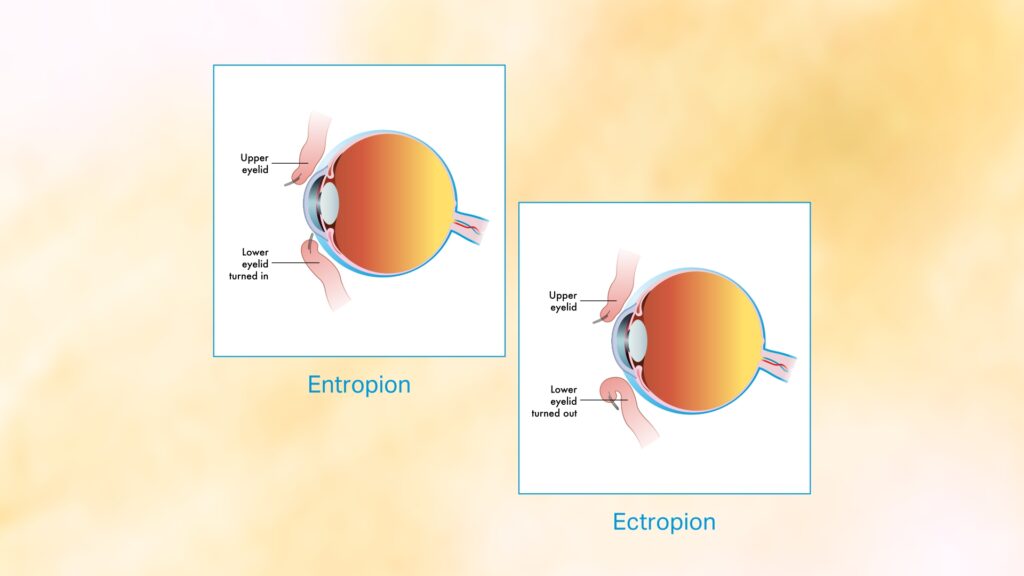
Entropion and Ectropion are conditions that affect your eyelids. To begin with, in Entropion, the eyelids turn inwards, causing it to rub against your cornea. Whereas, in Ectropion, your eyelids turn outwards and, thus, do not touch your eyes. Hence, your eyes remain more exposed to dust particles, bacteria, etc., in the air.
Entropion usually affects the lower eyelid and causes eye discomfort and irritation. Also, it has the potential to damage your cornea and cause vision loss if not treated on time.
Older adults over the age of 60 generally have this condition. Also, people with a previous eye injury or surgery may get the condition due to scar tissue on the eyelid.
Symptoms of entropion
- Red eyes
- Blurry vision
- Itching
- Eye pain
- Tearing (watering)
- Sensitivity to light & wind
- Drainage
- Feeling of an object in the eye
Treatment of Entropion
The treatment usually happens using the following methods
- Lubricating eye drops: Artificial tears or ointments moisturise your eyes to prevent discomfort through a short-term solution.
- Tapes or stitches: They help reposition your eyelids temporarily. The eyelids are also numbed using an anaesthetic and stitched into a favourable position for long-term benefits.
- Soft contact lenses: Certain doctors may recommend you soft contact lenses to help you ease your discomfort. They may or may not be prescription contacts.
- Botox injection: This injection can weaken your eyelid muscles and cause the eyelids to turn inwards. But they may be required every three to four months if surgery isn’t an option.
- Surgery: The two methods are eyelid tightening and retractor reinsertion. In eyelid tightening, your eyelid will be shortened using a lateral tarsal strip to lighten your lid. Whereas, in the retractor reinsertion method, your lid retractor will be tightened. The lid retractor is the muscle that opens and closes your eyelid.
In Ectropion, your cornea can become irritated, scratched or even scarred, affecting vision quality.
Reasons for Ectropion
- Chronic rubbing during sleep or daytime
- Relaxation of eyelids due to ageing
- Skin cancer
- Trauma
- Previous eyelid injury/surgery
- Skin damage from UV exposure or smoking
- Facial nerve palsy
Symptoms of ectropion
- Redness
- Impaired vision
- Saggy eyes
- Light & wind sensitivity
- Mucus discharge
- Excess tearing
- Ocular irritation & itching
Treatment of ectropion
In this condition, the treatment options available are similar to that of entropion. These include:
- Using artificial tears to moisturise the ocular surface. But this is a temporary procedure.
- Lubricating ointments will have the same effect as artificial tears on your ocular surface.
- Surgery becomes a necessity when artificial tears or lubricating ointments do not work on your eyes. Also, if scarring tissue remains a concern, the only way out is surgery to reposition your eyelid to its normal or at least a very favourable position.
All along the article, we’ve had a look into the differences between entropion and ectropion. So, each has its symptoms, causes, diagnosis and treatment methods. The important learning is to detect them and treat them before they can become a threat to your vision.
Maxivision Eye Hospital is one of the best eye hospital in Hyderabad. Hence, if you’re experiencing signs of entropion or ectropion, please get in touch with our ever-helpful team. We assure you the best solutions.